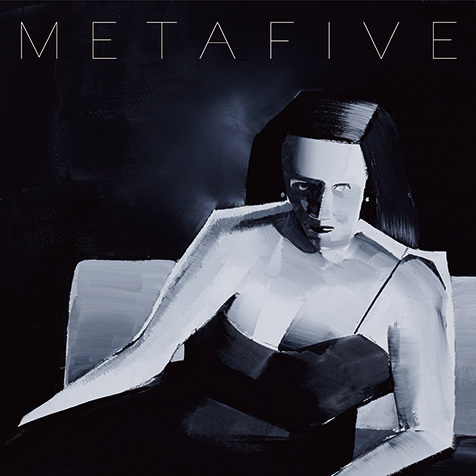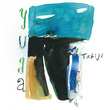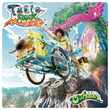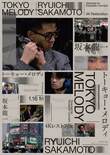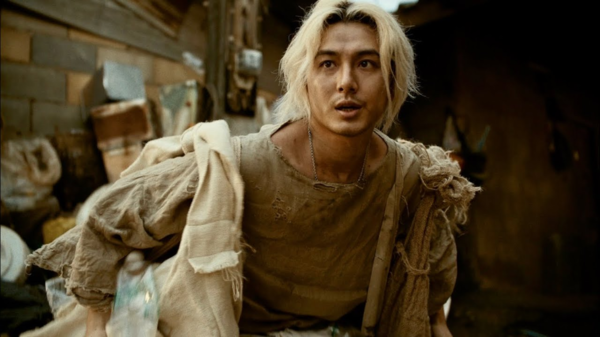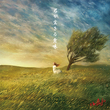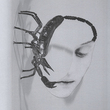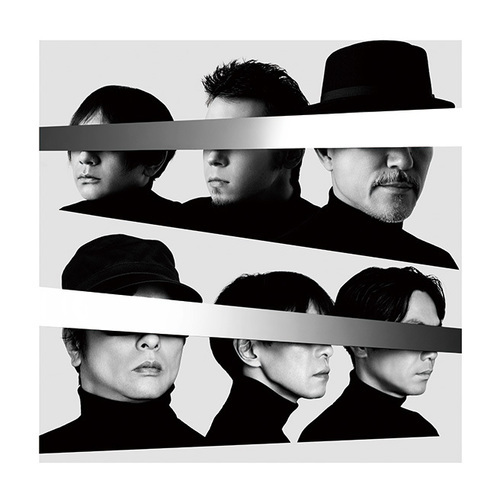
The much-talked about super band finally releases their 1st album! A collection of ever-changing metamorphic tracks resulting from the sweet collisions of 6 individualities──
Detailed talks with 3 of the members reveal the [META] process of production―
Yukihiro Takahashi × Tomohiko Gondo × LEO IMAI
(Interviewed and written by: Yasuo Murao)
Yukihiro Takahashi, Keigo Oyamada, Yoshinori Sunahara, Tomohiko Gondo and LEO IMAI. This exceptionally gorgeous band consisting of a mix of generation-crossing artists ―METAFIVE, has finally completed the long-awaited original studio album, “META”. The band that was originally formed for a one-off performance at [TECHNO RECITAL], the show organized by Takahashi, decided to get busy with further performances at music festivals. Under the name Yukihiro Takahashi & METAFIVE, the group also contributed a track to the soundtrack “Ghost in the Shell: The New Movie O.S.T.” of which one of the members, Cornelius (the stage name for Keigo Oyamada) scored, spurring the growth of the group as a band. This much-anticipated album arrives as an electronic and danceable piece of work with the individualities of each member colliding, creating metamorphosing [meta] sounds, that come together to perfect a masterpiece that adds a completely new page to the history of techno. How this piece was put together? We had a chance to sit down and hear in person from 3 of the group ― Takahashi, Gondo and LEO.
――When the band was formed, did you have any thoughts of making a studio album at all?
Takahashi: “No, none at all. After performing at [TECHNO RECITAL], we were invited to appear at several music festivals, and started to realize that with each performance, we were getting better as a band. I think we were at our best at the event for [Ghost in the Shell] ([GHOST IN THE SHELL ARISE “border:less experience” sounds curated by CORNELIUS] held at the National Museum of Emerging Science and Innovation (Miraikan) in November of 2014). I posted a comment afterwards saying something like ‘The show was absolutely fantastic. I’d like to believe that we’re not a band ready to stop yet’, and apparently TEI was also thinking the same thing, so he retweeted my comment. But that doesn’t mean that we started going ’hey, let’s make an album’, but when we got together at the beginning of 2015, strangely enough, we were already in this kind of album-making mode.”
LEO: “It was the track “Split Spirit” by Oyamada-san (on “Ghost in the Shell: The New Movie O.S.T.”) that the six of us co-worked for the first time. The [Ghost~ ] event came right after that, and I think that everyone’s creative fire was fueled and alit at the time. ‘This is too good to stop with only one track,’ ‘Perhaps one more track,’ ‘And maybe another??…’ I guess those kinds of imaginations led to the aspiration to make an album.”
――What was discussed at the very first meeting?
Takahashi: “That all members should be in charge of 2 songs each, though, not that each of us would fully write 2 songs each. Our method of making songs this time was to pass around the data of tracks with each of us editing it by adding or subtracting sounds as it went along. And the person who delivered the original track was to be ultimately responsible of giving the track the finishing touch.”
――Did you talk about the direction of the sounds?
Takahashi: “Basically, we decided to keep it loose, but Marin (=Sunahara’s alias) left a comment saying ’it would be great to make [music that makes you want to move]’, and I guess that stuck in everyone’s head. So in general, the songs are in higher BPM. With members like this, it would have been more likely to make something more low-keyed, but turns out, that never happened. We are a rookie band after all, so we figured it better to have zing.”
――Right. To an extent, you are a ‘rookie’ (laugh). So, as the tracks got passed around the members, did the sounds show dramatic changes?
Takahashi: “Yes they did. In the instance of the song “Don't Move”, I was pretty blown away with the way it kept on changing.
Gondo: “This kind of method of song-making isn’t that uncommon, but I must say that METAFIVE was especially fun and easy to work with. All of us work the same kind of work, and our backgrounds share a fair amount in common, and much was the case that someone would fill in the tracks with sounds that I’d wanted, even without my telling them.”
LEO: “I was always waiting in anticipation for the track to come back, wondering to myself what surprise ingredients will be added this time.”
――In your case LEO, with everyone being senior to you, did you feel any pressure adding or crossing out the sounds from their works?
Gondo: “I remember you putting it pretty point-blank, -‘We don’t need this’.”
LEO: “True. But essentially, the sounds of what came passed along were all so superb, and already looked impeccable. I’ve never been in a band myself, so making songs like this felt really fresh to me.”
Takahashi: “No, actually he seems to have a lot more he wants to grumble about (laughs). Well, kidding aside, music wouldn’t be as fun if we couldn’t work at arm’s length and had to keep worrying about age etc.”
――Absolutely agree. Now, out of the 2 songs from LEO, “Disaster Baby” is a fairly rock-oriented number that probably wouldn’t come out from any other member.
LEO: “Oyamada-san used to say it sounded like Van Halen
Takahashi: “I think it’s a song that typically would have live drums. Perhaps we’d do that at our gigs, in a bit quicker tempo.”
――We see Yukihiro (Takahashi)-san soundly beating away the drums in Gondo-san’s songs, “Gravetrippin” and “W.G.S.F.”.
Gondo: “Yes, in my case, when I write songs, I just can’t help wanting Yukihiro-san be the drummer for it. The patterns always end up being difficult though.”
Takahashi: “Yeah, they were super hard to play. But having live-played drums in the track, “W.G.S.F.” now has a sweet groove to it.”
――In your case, Gondo-san, in what kind of state did you deliver the base tracks to everyone? Did you have the rhythms fixed from the beginning?
Gondo: “I tend to get pretty elaborate when making these tracks, unlike the track from Oyamada-kun, “Don't Move”, that was actually passed around deliberately omitting any melody. I’ve learnt through the making of this album that, with a band like this, it’s actually that (Oyamada’s) kind of process that makes the song richer rich in variation and fun to work on.”
Takahashi: “Me too, I’m like Gon-chan (Gondo), -I get too much into depth with the making. That’s the thing I reflect on this time. When you elaborate on the making of the base track too much, it allows little space to give touches to or play around with.”
――Right enough, the two tracks Yukihiro-san wrote - “Anodyne” and “Threads” - both have the typically signature Yukihiro-tone. They create this melodious and folky atmosphere.
Takahashi: “Well, perhaps that’s why they were all the more suitable to be placed at the 6th track at the middle of the lineup, and at the end. They act as perfect ‘side-dishes’ served between the main course. But actually, I did let everyone know that they were ‘free to change the melodies’ when I passed the track around, but no one did (laughs).”
Gondo: ”That’s because we didn’t need to. Yukihiro-san is really meticulous when it comes to making melodies, and he keeps on changing them. Like, within a day after once changing it, he’d come back saying ‘I want to make it one key lower after all’.”
――So I guess that means the connection with words (lyrics) also become very important.
Takahashi: “Absolutely. It makes a huge difference between having English and Japanese for the lyrics.”
――Speaking of lyrics, LEO is contributing a lot with the songwriting this time. I believe you were also assigned to write the lyrics for tracks written by other members.
LEO: “Everyone had keywords or specific themes prepared, so having those as starting points, it wasn’t that hard to do. For instance, Yukihiro-san specifically noted that he wanted to the song to be 'rueful and romantic'
Takahashi: “LEO-kun and I have worked together with In Phase (Takahashi’s other band project) so I think he knew the image of my songs. I guess you were thinking, 'yeah, another wistful one as always', no?
LEO: “Yeah, wistfulness and the country view. Trying to give lyrics to melodies made by Yukihiro-san, those are what come to mind.”
Takahashi: “Putting it nicely, cinematic. Not putting it nicely, manneristic (laughs).”
――There’s no need to put yourself down that much (laugh). The vocals are mainly done by Yukihiro-san and LEO, but how do you decide on who does what part?
Takahashi: “The parts seem to fall into place naturally with the keys, but in general, LEO-kun decides. Like, ‘Yukihiro-san would start singing from here’, or ‘We’ll harmonize here’ etc. There were some occasions in which the original writer of the song, for example, TEI-kun, giving specific instructions, like ‘this part is for Yukihiro-san’.”
LEO: “I guess there had been tracks, like “Luv U Tokio”, that there was already a fixed image of the main vocals to be sung by Yukihiro-san.”
――Were the arrangements of the harmonies done by LEO-kun too?
Takahashi: “Yes, basically LEO-kun, and there were absolutely no instances that we felt something wasn’t right. Although, the newly added harmonies in “Whiteout” were difficult to work out.”
LEO: “In ”Disaster Baby”, Yukihiro-san did an amazing job with creating a wonderful harmony right there in the studio.”
――That’s nice. Hearing all this, it certainly seems like all the members of METAFIVE are being great inspirations to each other while having full respect to one another. What a grown-up band you are!
Takahashi: “To hold respect without having to keep each other in check, -that’s something I’ve never experienced in any other band. Plus, we can rely on other members for various tasks with ease. Never had this since YMO. But you know, we’re still ‘newly-weds’. We might start experiencing boredoms or conflicts with each other (laughs).”
――You lot seem to have absolutely nothing to do with such things.
Gondo: “For all one knows, I might be the one ending up being the flash point of those (laughs), but anyhow, there’s so much to look forward with this band. And of course, I am willing to enjoy it to the fullest myself.”
Takahashi: “In both pupa (electronica band led by Takahashi) and In Phase, there’s so much Gon-chan is required to take up, starting with sound checks. But here (in METAFIVE), those are split with Marin.”
Gondo: “He’s kindly volunteers to take on those tasks. But not to the extent of taking up the whole thing. He’s great in keeping that balance. Since I’ve got so many loads off my shoulder now, I’m thinking of trying out new things, -like singing.”
――For LEO-kun to whom being in a band is something new, what kind of a band is METAFIVE for you?
LEO: “It’s a band that never ceases to be inspiring. I think the album we’ve made is awesome too. Though, I also felt that it’s a band that really doesn’t go well with summer when we played at summer festivals last year (laughs). Our ‘costumes’ are black from head to toe. For me personally, METAFIVE is a goth band.”
Takahashi: “Because our band can only be when everything including visuals are properly in place, it’s not too off-the-mark to say that we’re not really a band for summer festivals. We’d be more than happy to be invited of course, but you know, none of us are that good in tans (laughs).”
LEO: “That’s what’s great about us. METAFIVE is the neo-goth band that represents Japan!”


